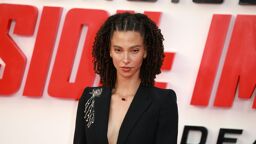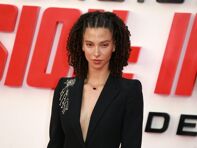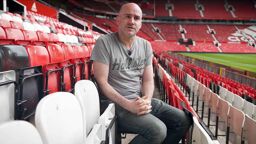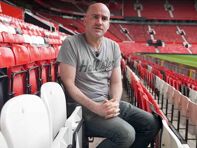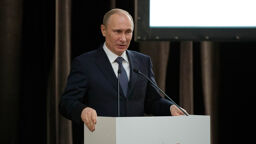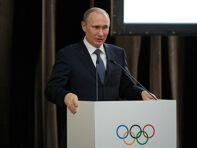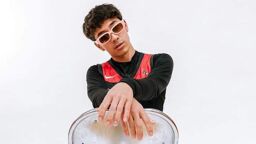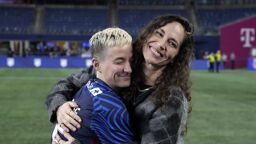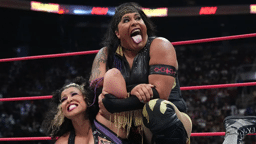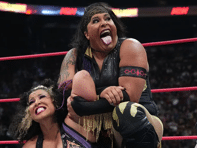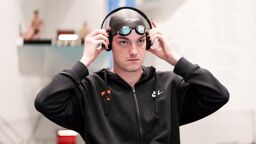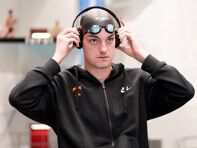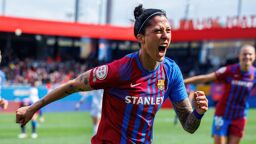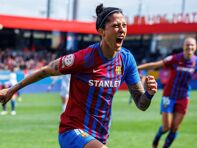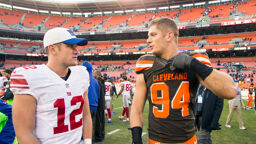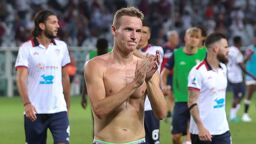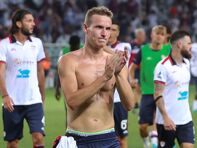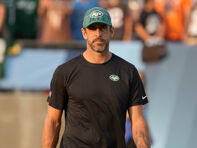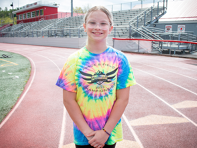When Michael Sam came out publicly as gay in 2014, he was the third of an historic trio.
MLS’ Robbie Rogers and the NBA’s Jason Collins had come out months earlier, with Rogers taking to the pitch with the L.A. Galaxy. When Collins played in the playoffs with the Brooklyn Nets, and Sam was drafted by the Rams, it appeared to many that the dam holding back gay athletes in major men’s pro sports was broken. People routinely wondered about a flood of athletes coming out.
Instead, it’s barely been a trickle. In the Big Five North American sports leagues, only two players — MLS’ Collin Martin and NFL’s Ryan Russell — have come out publicly in the last six years while still playing, Russell doing so as a free agent with his playing future in the NFL in doubt.
So how did three players come out in 12 months, but only two came out in the following six years?
Many people point to what happened to Sam. Months after being selected just a handful of picks before the end of the 2014 NFL Draft, he was cut by the Rams and left looking for a new home.
There were various factors that played into the decision to release Sam. The Rams were already strong at the defensive end position when they drafted him, so making the team was an uphill battle to start. The coaching staff was high on undrafted free agent Ethan Westbrooks. And no doubt there were other issues.
Yet the storyline that percolated was that Sam couldn’t cut it in the NFL because he was gay. He ended up being picked up by the Dallas Cowboys for their practice squad. But no one thinks that was real. That was the Cowboys doing the league a favor to save face.
What if?
What if Sam didn’t get cut from the Rams? Where would we be? Would we have more out athletes in the Big Five sports leagues?
What if on the final cutdown day in the summer of 2014, Sam decided to stay in St. Louis instead of heading to Columbia, where his Univ. of Missouri team was playing its home opener? What if he took the call from head coach Jeff Fisher and got the news that he was being cut from the 53-player roster, but he was being kept on the practice squad of the Rams?
On the Rams practice squad, the visuals around Sam would have been much different. The team that drafted him and gave him a shot had decided to keep him around. That would have looked and felt a lot different to a lot of people.
One of those people would have been Sam himself. The vote of confidence and affirmation that he belonged in the NFL could have only helped his determination and self-confidence.
Plus, just a week later the St. Louis Rams defense was hit with the injury bug the very first game that season when DE Chris Long was hurt and forced onto injured reserve until November.
Suddenly there was an opportunity with the Rams that Sam could have stepped into. That doesn’t mean he would have started week 2. Far from it. But it could have brought him onto the 53-player roster and put him into games later that season.
When you’re added to a 53-player roster, and ultimately the 46-player roster of a regular-season game, the conversation can change about the player. And again, where that conversation may be most important is within the player himself.
Sticking around the Rams — between the practice squad and the regular-season roster — for a season would have left Sam in a different place. There would be a sense of confidence, a sense of legitimacy, around his arrival in the NFL. Today conversations swirl about whether he should have even been drafted. Those conversations would be quieted. He would have made it.
Plus, he would have never had to go to the Veteran Combine that took place in 2015 that left him with poor scores. Dancing With The Stars would have been put on hold. He would have approached 2015 training camp no longer a rookie.
Changing the storyline
I’ve written about how strange — how statistically unique — it is that Sam never made a regular-season roster in the NFL. In today’s reality, it is impossible to believe he was not hurt by homophobia. If you believe he wasn’t, you’re ignoring what NFL executives themselves said publicly.
Yet if he had been kept on the Rams practice squad and made appearances on the regular-season and gameday rosters, even if for just the 2014 season, the public perception of what happened would be different.
Agents wouldn’t be able to tell their gay clients looking to come out, “See what happened to Michael Sam?” Athletes wouldn’t be wondering if being gay would keep them from any shot.
Truth be told, the examples of Collins and Rogers are clear: Both of them played in post-season games with their clubs, with Rogers ultimately winning the MLS Cup. Yes, openly gay gay and bi athletes have, and will in the future, play in all the major men’s sports.
Yet it’s the example of Sam that too many focus on. NFL is king in America, and no one’s story got more public attention than his.
To be clear, I do not think the Rams’ decision to cut him had anything to do with him being gay. Zero. Absolutely zero.
Also to be clear, I think Sam’s courage is an incredibly inspiring example for anyone. That some people focus the conversation around Sam on whether he ultimately played in the NFL, and not the courage he demonstrated, is unfortunate.
Yet if Sam had played for the Rams that season, I think we would have had more than just two active athletes in the Big Five come out in the last six years. I don’t know if it would have been a flood, but a gentle stream is more than we have now.





